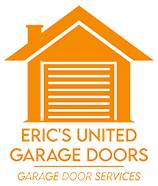How to Compare Garage Door Installation Companies in Fort Lauderdale, Florida
Choosing the right installer is as important as choosing the right door. In Fort Lauderdale, you need a company that understands wind-load codes, coastal corrosion, and the fine points of opener calibration. Before you commit, take time to understand key differences among providers, and review trusted guidance on garage door installation so you can ask informed questions and evaluate proposals with confidence.
A strong installer will combine technical skill with responsive service. They will explain material options, assess site conditions carefully, and present a transparent scope of work. The sections below provide a framework for comparing companies and selecting the best fit for your home.
Licensing, Insurance, and Compliance
Always verify licensing and insurance. Proper credentials protect you and indicate that the company operates responsibly. Ask about permits and inspections for Fort Lauderdale projects. Reputable companies will manage this process and provide documentation so your installation complies with local codes and wind-load requirements.
Be sure the team understands hurricane-rated doors, impact glass options, and reinforced track systems. Their familiarity with local standards will help prevent delays and ensure a secure outcome.
Experience and Specialization
Years in business, brand familiarity, and specialized training matter. Ask which manufacturers the company partners with and whether technicians receive ongoing education on new hardware, openers, and safety standards. A team with residential specialization will be more adept at handling design preferences, HOA expectations, and the nuances of attached garages with living spaces above.
Technicians should be comfortable with various drive types, including belt, chain, direct, and wall-mount openers. They must also know how to address low headroom, high-lift applications, and structural reinforcement needs.
On-Site Assessment Quality
The initial visit reveals a lot about a company’s professionalism. Expect careful measurement of the opening, inspection of the header, review of wall construction, and planning for opener mounting points. The technician should ask about how your family uses the garage and recommend insulation, seals, and hardware accordingly.
Quality assessments consider corrosion resistance, potential interference from storage racks, and whether nylon rollers and belt-drive openers would improve noise levels in your home.
Product Selection and Customization
Top companies provide a wide selection of doors, from traditional steel to modern aluminum-and-glass, along with options for composite and wood looks. They explain insulation types, panel designs, window configurations, and color choices. They should also clarify compatibility with wind-load ratings and how accessory choices affect door weight and spring sizing.
- Insulation: Polyurethane vs. polystyrene performance and rigidity.
- Hardware: Heavy-gauge hinges, reinforced struts, and corrosion-resistant fasteners.
- Glass: Impact-rated, frosted, or tinted options that balance light and privacy.
- Openers: Quiet drives, smart controls, battery backup, and wall-mount configurations.
Scope of Work and Installation Process
Request a detailed scope of work that outlines removal of the old door, installation of new tracks and torsion system, opener setup, weather sealing, and safety testing. The plan should include calibration of travel limits and force settings, photo-eye sensor alignment, and homeowner orientation.
Ask how the company handles unexpected issues such as damaged framing or out-of-square openings. A proactive approach indicates experience and reduces surprises during installation.
Communication and Responsiveness
Clear communication before, during, and after installation builds trust. Look for companies that provide timelines, confirm appointments, and offer follow-up support. You should receive guidance on maintenance, warranty details, and what to do if you notice unusual noises or sensor alerts after the job is complete.
Responsiveness is especially important during storm season, when battery backups, seals, and sensor alignment may need attention. The best providers stand behind their work and provide helpful troubleshooting tips.
Comparing Proposals Without Guesswork
When proposals arrive, compare apples to apples. Confirm door model, insulation type, wind-load rating, hardware grade, opener drive type, smart features, and battery backup. Align installation details such as new tracks vs. reuse, number of struts, and included seals. This approach ensures that you are evaluating comparable solutions rather than partial or mismatched packages.
Evaluate warranties on both door and opener, and ask about service support after installation. Clear terms indicate confidence in workmanship and product quality.
Red Flags to Watch For
- Vague or incomplete scopes of work.
- Pressure to skip permits or inspections.
- Reluctance to discuss wind-load ratings, reinforcement, or hardware specifications.
- Proposals that reuse old tracks or springs with a new door.
- Unwillingness to provide proof of insurance or references.
What a Professional Installation Looks Like
- Thorough measurement and assessment of the garage structure and opener power source.
- Safe removal and disposal of the old door and hardware.
- Installation of new, properly sized tracks, torsion system, cables, and drums.
- Panel stacking, alignment, and hinge and roller placement for smooth travel.
- Opener mounting, rail alignment, and calibration of travel limits and force settings.
- Perimeter sealing and final safety checks, including photo-eye alignment.
- Homeowner orientation, remote and keypad programming, and maintenance guidance.
By comparing companies based on technical detail rather than general claims, you ensure a safer, quieter door with fewer callbacks. Midway through your research, review authoritative insights on garage door installation to sharpen your checklist and confirm you are evaluating key criteria.
Maintenance and Aftercare Support
After installation, reliable companies offer clear maintenance schedules and support. Expect guidance on lubrication intervals, sensor cleaning, and annual checkups. A dependable provider will respond promptly to questions about noises, balance, or opener connectivity so small issues do not become big problems.
Document your door model, opener type, and installation details. Keep warranties, permit records, and the manual together for easy reference.
Frequently Asked Questions
Q: How do I know a company understands local codes? A: Ask about their process for permits and inspections and request examples of hurricane-rated installations they have completed in Fort Lauderdale.
Q: Should I prioritize insulated doors? A: If you value noise reduction, structural rigidity, and comfort in adjacent rooms, insulation is a wise choice even in a warm climate.
Q: What opener should I choose? A: Belt-drive or direct-drive openers are quiet, while wall-mount designs free ceiling space. Match the drive to door weight and usage.
Q: Can I reuse my current tracks or springs? A: Reuse is generally discouraged because mismatched components cause wear and noise. New doors perform best with new, properly sized hardware.
Q: How long does installation take? A: Many residential installations finish in one day, with additional time for complex sites or custom doors.
Q: What about impact glass? A: It adds safety and compliance for certain designs. Your installer can explain options and compatibility with your door style.
Q: How often should I schedule service? A: Annual professional checks combined with biannual homeowner inspections and lubrication are effective.
Q: How do I assess workmanship quality? A: Listen for smooth operation, check for even gaps along the door, and verify consistent sensor alignment and reliable auto-reverse.
Ready to Choose with Confidence?
Focus on licensing, wind-load expertise, detailed scopes, and responsive support. The right installer brings technical rigor and clear communication to every step, from measurement to final safety check. Begin your comparison by exploring professional garage door installation options, request a consultation, and move forward knowing you have selected a dependable partner.

